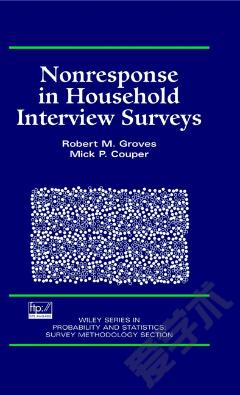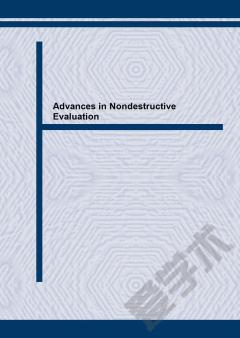Estimation in Surveys with Nonresponse
Preface. Chapter 1: Introduction. Chapter 2: The Survey and Its Imperfections. 2.1 The survey objective. 2.2 Sources of error in a survey. Chapter 3: General Principles to Assist Estimation. 3.1 Introduction. 3.2 The importance of auxiliary information. 3.3 Desirable features of an auxiliary vector. Chapter 4: The Use of Auxiliary Information under Ideal Conditions. 4.1 Introduction. 4.2 The Horvitz-Thompson estimator. 4.3 The generalized regression estimator. 4.4 Variance and variance estimation. 4.5 Examples of the generalized regression estimator. Chapter 5: Introduction to Estimation in the Presence of Nonresponse. 5.1 General background. 5.2 Errors caused by sampling and nonresponse. Appendix: Variance and mean squared error under nonresponse. Chapter 6: Weighting of Data in the Presence of Nonresponse. 6.1 Traditional approaches to weighting. 6.2 Auxiliary vectors and auxiliary information. 6.3 The calibration approach: some terminology. 6.4 Point estimation under the calibration approach. 6.5 Calibration estimators for domains. 6.6 Comments on the calibration approach. 6.7 Alternative sets of calibrated weights. 6.8 Properties of the calibrated weights. Chapter 7: Examples of Calibration Estimators. 7.1 Examples of familiar estimators for data with nonresponse. 7.2 The simplest auxiliary vector. 7.3 One-way classification. 7.4 A single quantitative auxiliary variable. 7.5 One-way classification combined with a quantitative variable. 7.6 Two-way classification. 7.7 A Monte Carlo simulation study. Chapter 8 The Combined Use of Sample Information and Population Information. 8.1 Options for the combined use of information. 8.2 An example of calibration with information at both levels. 8.3 A Monte Carlo simulation study of alternative calibration procedures. 8.4 Two-step procedures in practice. Chapter 9 Analysing the Bias due to Nonresponse. 9.1 Simple estimators and their nonresponse bias. 9.2 Finding an efficient grouping. 9.3 Further illustrations of the nonresponse bias. 9.4 A general expression for the bias of the calibration estimator. 9.5 Conditions for near-unbiasedness. 9.6 A review of concepts, terms and ideas. Appendix: Proof of Proposition 9.1. Chapter 10: Selecting the Most Relevant Auxiliary Information. 10.1 Discussion. 10.2 Guidelines for the construction of an auxiliary vector. 10.3 The prospects for near-zero bias with traditional estimators. 10.4 Further avenues towards a zero bias. 10.5 A further tool for reducing the bias. 10.6 The search for a powerful auxiliary vector. 10.7 Empirical illustrations of the indicators. 10.8 Literature review. Chapter 11: Variance and Variance Estimation. 11.1 Variance estimation for the calibration estimator. 11.2 An estimator for ideal conditions. 11.3 A useful relationship. 11.4 Variance estimation for the two-step A and two-step B procedures. 11.5 A simulation study of the variance estimation technique. 11.6 Computational aspects of point and variance estimation. Appendix: Properties of two-phase GREG estimator. Chapter 12: Imputation. 12.1 What is imputation? 12.2 Terminology. 12.3 Multiple study variables. 12.4 The full imputation approach. 12.5 The combined approach. 12.6 The full weighting approach. 12.7 Imputation by statistical rules. 12.8 Imputation by expert judgement or historical data. Chapter 13: Variance Estimation in the Presence of Imputation. 13.1 Issues in variance estimation under the full imputation approach. 13.2 An identity of combined and fully weighted approaches. 13.3 More on the risk of underestimating the variance. 13.4 A broader view of variance estimation for the combined approach. 13.5 Other issues arising with regard to item nonresponse. 13.6 Further comments on imputation. Appendix: Proof of Proposition 13.1. Chapter 14: Estimation Under Nonresponse and Frame Imperfections. 14.1 Introduction. 14.2 Estimation of the persister total. 14.3 Direct estimation of the target population total. 14.4 A case study. References. Index.
{{comment.content}}








 京公网安备 11010802027623号
京公网安备 11010802027623号